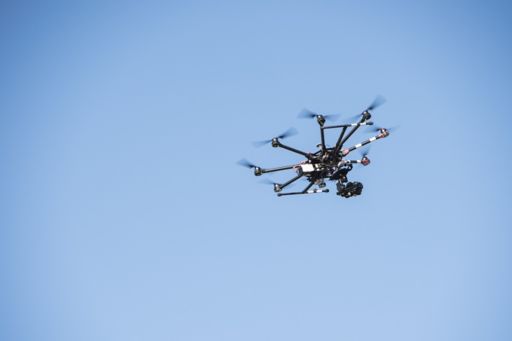Making the most of the third dimension
Making the most of the third dimension
Personal drones are buzzing on the beaches and at parks; commercial drones are working on construction sites and farms; delivery drones are even starting to deliver packages in some cities.

And by all accounts, this is just the beginning. Gartner believes that worldwide production of personal drones neared 3 million units in 2017. Forecasts suggest that number will rise to over 5 million in the next 2 years alone. The vast majority of these will be taking flight in and around cities.
While it’s impossible to accurately predict the future, there are already signs emerging of what cities can expect over the next few years. Current drone production growth rates suggest there will likely be millions of drones flying around each city center. The increasing ‘specialization’ of drone technology for commercial use indicates there will be many different types and sizes of drones at work around a city. The massive rise in use cases being published by companies suggests that drones will be put to use in a wide range of hitherto unimagined ways. In many respects, this is great news. The adoption of drones in the urban setting could help reduce congestion (as deliveries and, maybe, people take to the skies). They could help improve safety and security (by, for example, conducting neighborhood surveillance). And they offer city managers a host of opportunities to improve the way they deliver their services (see the blue box below for more on this). Not surprisingly, many city leaders are keen to let the drones fly.
Five ways cities could be using drones right now
1. To improve the monitoring of situations (such as events), people or objects. 2. To provide temporary communications support or infrastructure, particularly after a natural disaster.
3. To inspect difficult-to-reach assets or locations such as tree tops, building rooftops and street lighting infrastructure.
4. To perform high-risk functions such as fire management, policing or searching for victims after a flood.
5. To install or maintain equipment and parts, particularly in complicated locations.
Opening a new dimension
If the pundits are right (and, in this case, they may actually be underestimating the size of the market), this rapid and widespread adoption of drones will represent a massive shift in the way things move around a city.
Until today, our perspective on transportation has been entirely two-dimensional; the adoption of drones in the urban environment opens up a third — and largely unused — dimension: low aerial urban airspace.
The problem is that — while drone tech and use cases are evolving rapidly — most cities have been slow to react. Some of the more advanced cities have started to think through the civic aspects of drone use. But these efforts have largely been reactive — focusing on solving key pain points like ensuring public safety, reserving protected airspace and managing privacy concerns — rather than proactive.
Few cities are currently thinking about how drones integrate into the existing urban transport ecosystem. Or about what infrastructure might be required to support the new urban technology. Fewer still have thought about how they might encourage the technology to take off in other key sectors and city service areas.
Taking flight
We believe that cities will need to take a much more proactive and holistic approach to managing the rapid adoption of drones in their jurisdiction. But we also firmly believe that this issue requires deep collaboration on many fronts — between cities, levels of government and the private and public sector.
In part, this will require cities to start thinking holistically about how they might build and invest into public private partnerships (possibly taking advantage of existing national programs such as drone test sites) to help both public and private sector players gain much-needed experience and capabilities. It will also require them to consider a radical re-alignment of their existing infrastructure planning and investment agenda to integrate this new technology into the existing transport ecosystem.
City leaders should also be collaborating with their peers in other jurisdictions to test and pilot new use cases for city operations. As noted in our side-bar, drones could deliver significant value to city managers and taxpayers. Sharing experiences, best practices and maybe even investment on their experiments and trails will be key to reducing cost and risk during this pioneering phase of development.
National governments will also need to play a role. The reality is that — to fully develop and mature — the commercial drone manufacturing and application development sectors would prefer a clear set of rules and regulations that are essentially standardized at the national (or, better yet, global) level. Just like any new technology, the standardization of technical specifications and regulatory guidelines will be key to not only driving commercialization and investment into the sector, but also in setting the rules of engagement for businesses and city governments.
© 2024 R.G. Manabat & Co., a Philippine partnership and a member firm of the KPMG global organization of independent member firms affiliated with KPMG International Limited, a private English company limited by guarantee. All rights reserved.
For more detail about the structure of the KPMG global organization please visit https://kpmg.com/governance.